We caught up with Alexandre Gabriel between flights to discuss the Planteray adventure. What followed was a fascinating discussion that turned out to be much more technical than expected: distillation in pot stills or columns, the merits of blackstrap molasses, vacuum distillation, the contribution of fermentation, GIs, continental ageing.
Now the owner of distilleries and exclusive partnerships in Jamaica, Barbados, Mauritius, Fiji, Paraguay and elsewhere, he didn’t shy away from any questions and revealed his vision for rum. Whether you find it original, iconoclastic or irritating, it is always fascinating.
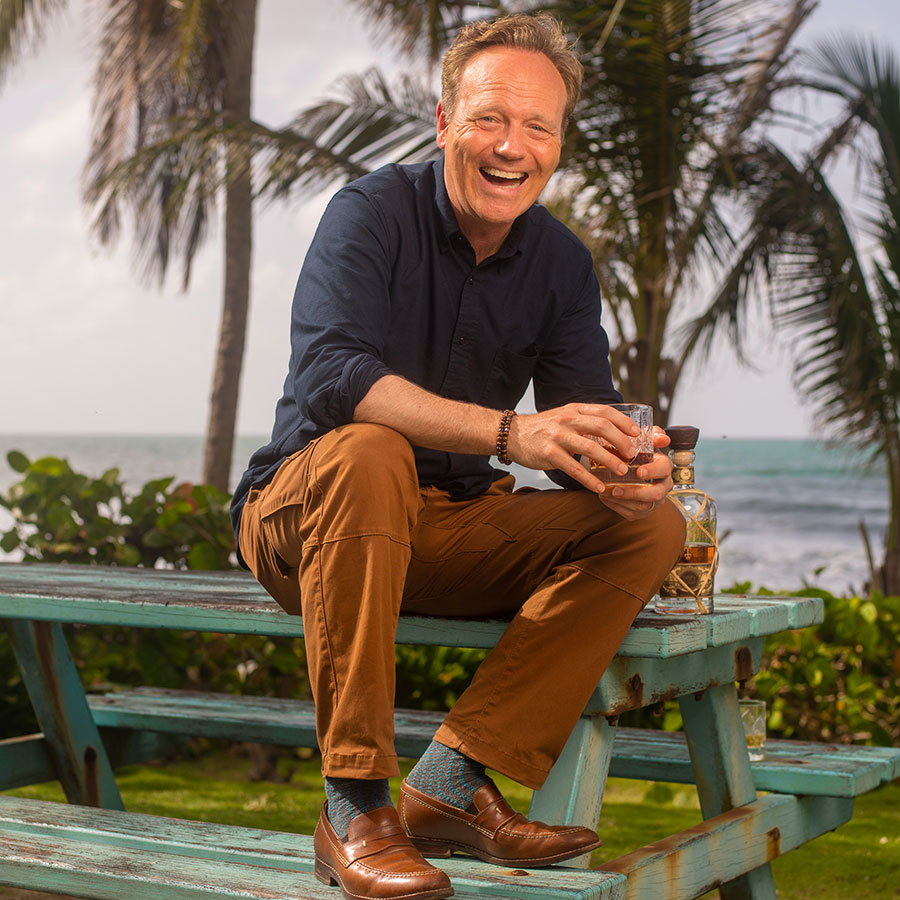
Where are you right now?
I’m in Jamaica for a Caricom distillery technical committee meeting. Every year, more than a hundred of us “techos” get together and spend a week together. It’s always a great time and something I look forward to. And now I’m off to Barbados!
What exactly do you discuss?
It’s magical for an enthusiast like me! We talk about distillation, fermentation, recycling our vinasses, how to boost esters, how to clean columns and stills as effectively as possible without damaging the equipment, safety measures, and so on. And what’s great is that it’s a real forum for exchange!
But aren’t they kind of competing with each other?
Yes, that’s exactly what makes the experience unique: imagining that ‘competitors’ can come together in such a spirit of goodwill. Everyone who takes part really gets into it. And then in the evening, everyone gets together to party, and we all dance! That’s the Caribbean spirit!
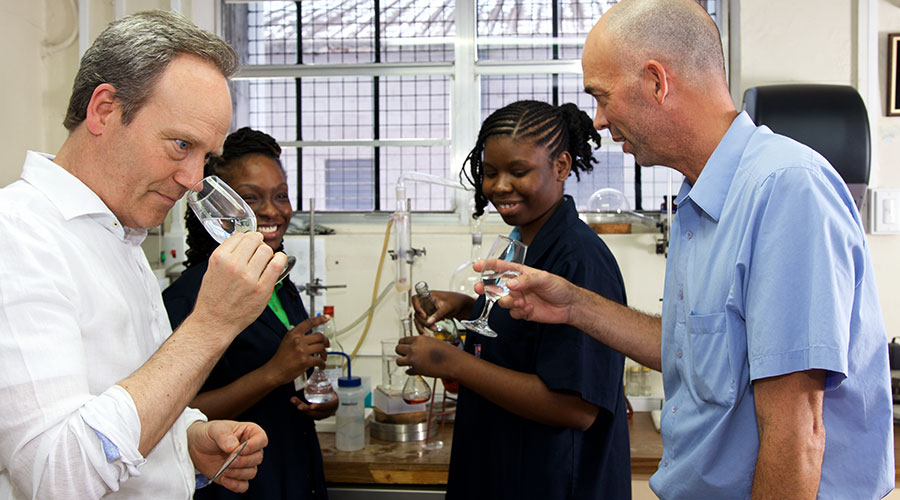
It must also be a good place to get a feel for developments in rum. What does the future hold?
I can’t go into detail, but I can tell you that more and more distilleries are taking an interest in pot still distillation. Especially in countries where it had completely disappeared. And now they come to me, because with my Charente background I have some knowledge on the subject! And they say to me, ‘We want to make rum using pot still distillation again.’ In fact, they are returning to what was the tradition in their countries before column distillation became widespread.
It’s true that we’ve also seen a certain return to favour of the pot still. How can this phenomenon be explained?
The main reason is that consumers are looking for taste, but taste with elegance and intensity. And for that, the pot still is the best.
But isn’t it more time-consuming and expensive to distil rum using a pot still?
Distilling in a pot still costs six times more than distilling in a column still. I’m talking about the act of distilling, not the raw materials or fermentation… And it’s true that the pot still is a very precise tool, but it’s also very slow. This explains why it has disappeared from many rum-producing regions, mainly for economic reasons. In Barbados, considered the birthplace of rum and boasting unique expertise, things turned out differently.
When the column still arrived, Barbadian producers did not replace the pot still. They kept it. Sometimes stored in a corner of the garden, sometimes put back into service later, but never thrown away. They kept both. And they even combined them. And that is very Barbadian, it is part of the country’s culture.
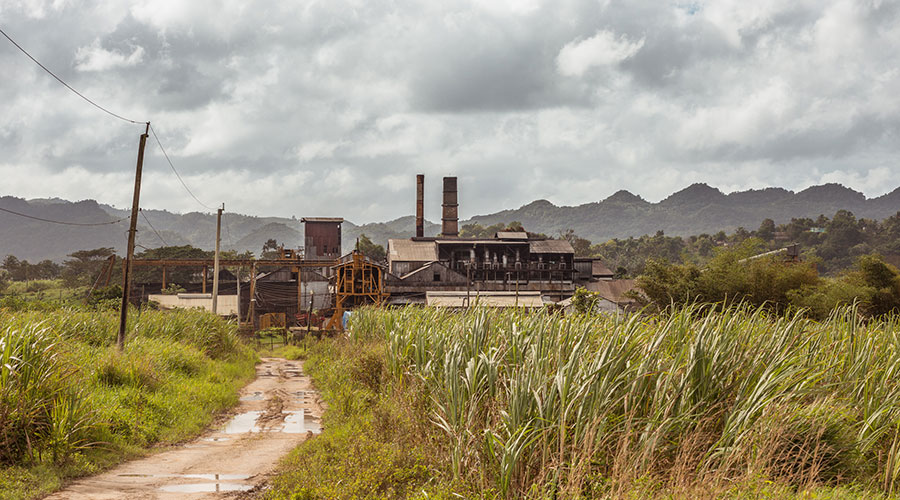
And in terms of taste, what is the advantage of the pot still?
For me, the pot still is one of the most intuitive and suitable tools for preserving the taste, richness and texture of rum.
Its batch operation allows for very precise control of the cuts: the heads, hearts and tails of the distillate are gradually separated, a bit like slicing a sausage, slice by slice.
This artisanal process offers valuable precision, particularly on the heart of the distillate, where the purest and most complex aromas are concentrated. In contrast, the column works continuously. The heads and tails are extracted at different points located on various levels.
Although this method is very effective, it requires great technical skill to obtain clear profiles, as the separation is more indirect. It also depends heavily on the type of column: some allow for very precise cutting!
What fundamentally distinguishes the pot still is its low level of reflux and rectification, which allows heavier, more complex compounds — such as esters and other volatile substances — to pass through, imparting a unique aromatic richness.
This makes it an extraordinary raw material for ageing: these aroma precursors reveal themselves over time and allow a master blender to create highly nuanced profiles. Pot still rums are often more concentrated, deeper, and sometimes even more ‘wild’ in their youth. Used alone or blended with column rums, they enrich the aromatic palette of a blend.
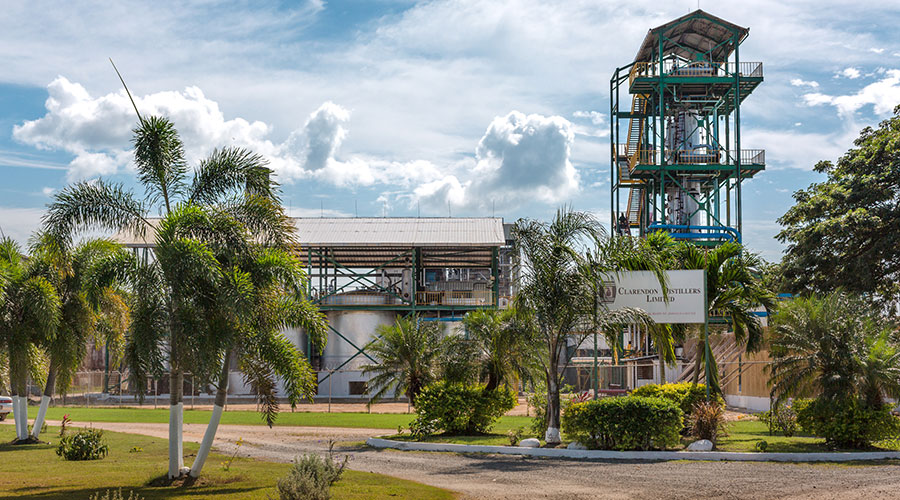
But you work with columns…
Of course! In Barbados, we have three columns. A small column with 23 trays, a historic John Dore, and then the vacuum column. And I can do single column, double column, or triple column.
With a single column, you get more heaviness, but also a lot of rusticity for the reasons we just explained, and that rusticity can also be very interesting. And sometimes, when it’s well distilled, like a Trinidad for example, it brings out floral notes, which is delicious. Each tool has its own personality. The key is knowing which one to use to tell the story you want to convey in the glass.
You mentioned vacuum distillation. What does that do?
On one of our columns, we have the option of activating or deactivating vacuum distillation, which allows us to easily compare the results. When this function is deactivated, we notice several things: more energy is consumed, the temperature rises more, and the raw material — the wine or wash — tends to degrade more quickly.
It can stick to the inside of the column, to the point where we sometimes have to dismantle everything… and clean it with a hammer and chisel! Vacuum distillation actually allows liquids to boil at a lower temperature. For example, ethanol normally boils at around 78°C, but under vacuum, it can turn into a gas at 40°C.
This means that less heat is used, which reduces energy consumption. But above all, it has a positive impact on taste: certain aromatic molecules, which are very sensitive to heat, can deteriorate at high temperatures. Distilling under vacuum protects them. The result is that the fine and delicate aromas of the raw material are better preserved, resulting in a more expressive rum that is more faithful to its origins.
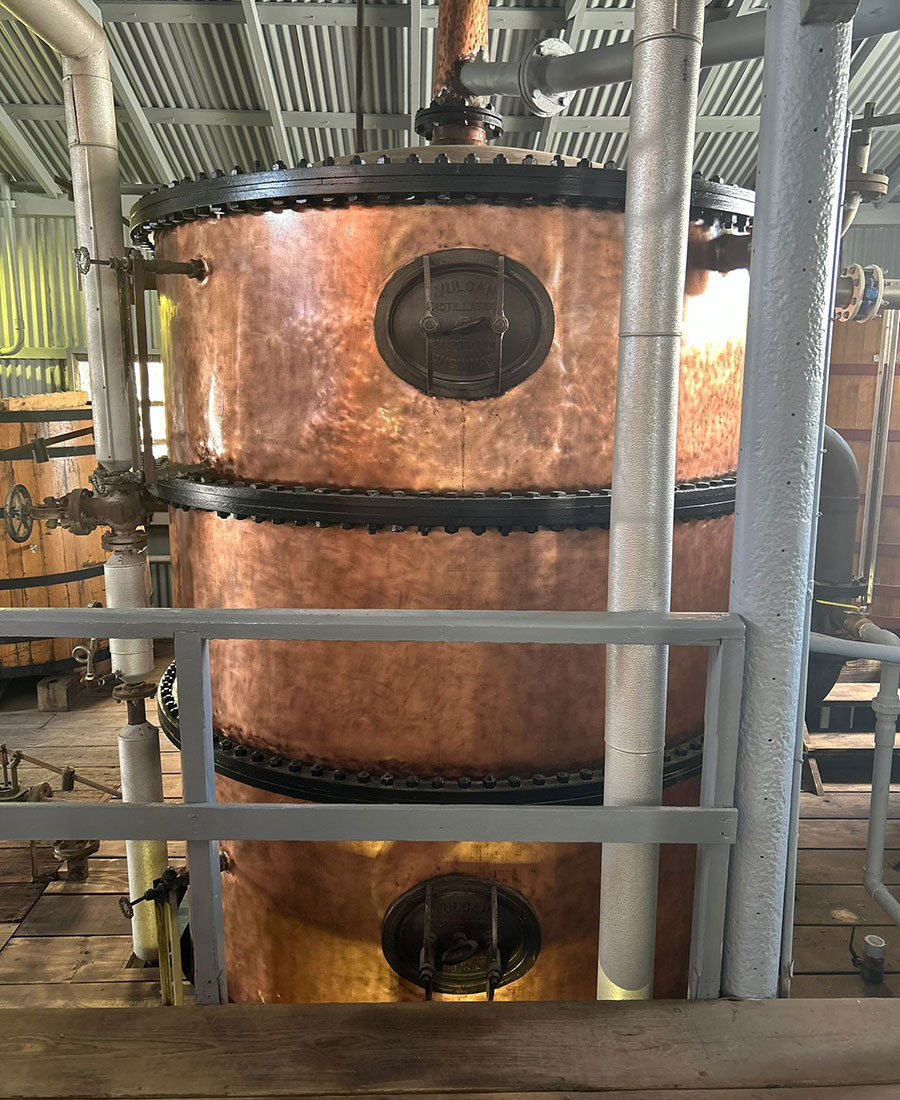
And in terms of aromas, I imagine you burn more when you deactivate the vacuum function?
Indeed, when the column is not under vacuum, we work at a higher temperature, which can alter certain aromatic molecules. It’s not necessarily ‘better’ or ‘worse’, but it’s different: compounds such as furfural, for example, can appear, with notes of toast or caramel.
There are two schools of thought on this subject. Some believe that the more intense heat can alter highly volatile aromatic compounds, such as certain esters. Others believe that the vacuum acts a bit like a vacuum cleaner, and that these esters could also escape too quickly.
My view is that with either process, aromas can either be preserved or lost, depending on how the distillation is controlled. Our chromatography analyses confirm this: there is no single truth, but rather technical choices that influence the final profile of the rum.
It should also be noted that without the vacuum, the raw material may ‘cook’ slightly, which promotes clogging of the column and makes cleaning more difficult. This is one of the adjustments that must be managed depending on the desired result.
Let’s return to this quest for taste…
I can give you a history of taste, since I have quite a bit of experience, no pun intended. Throughout history, there have been major shifts in the taste of all spirits, which always oscillate between lightness and texture.
For example, in the 1950s, a movement that Smirnoff benefited from, and perhaps even partly instigated, was to move towards lightness in spirits. We moved towards spirits that, chemically speaking, had very few flavour elements; they were mainly water and alcohol. It was a somewhat hygienist approach. And that almost killed all flavourful products.
At one time, the advert said, ‘Smirnoff leaves you breathless’. But in reality, it meant ‘odourless’. In other words, after a drink, your breath won’t taste of alcohol. And I tried it out! When I was 18, I worked in the United States for three months during the summer. First, I worked like a dog in a factory on a 3-8 shift to pay for my ticket. Once there, I lived in a YMCA on South Street Seaport in southern Manhattan for £25 a night. I worked nights and mornings in a bar, pouring shots of vodka for traders on their way to work on Wall Street.
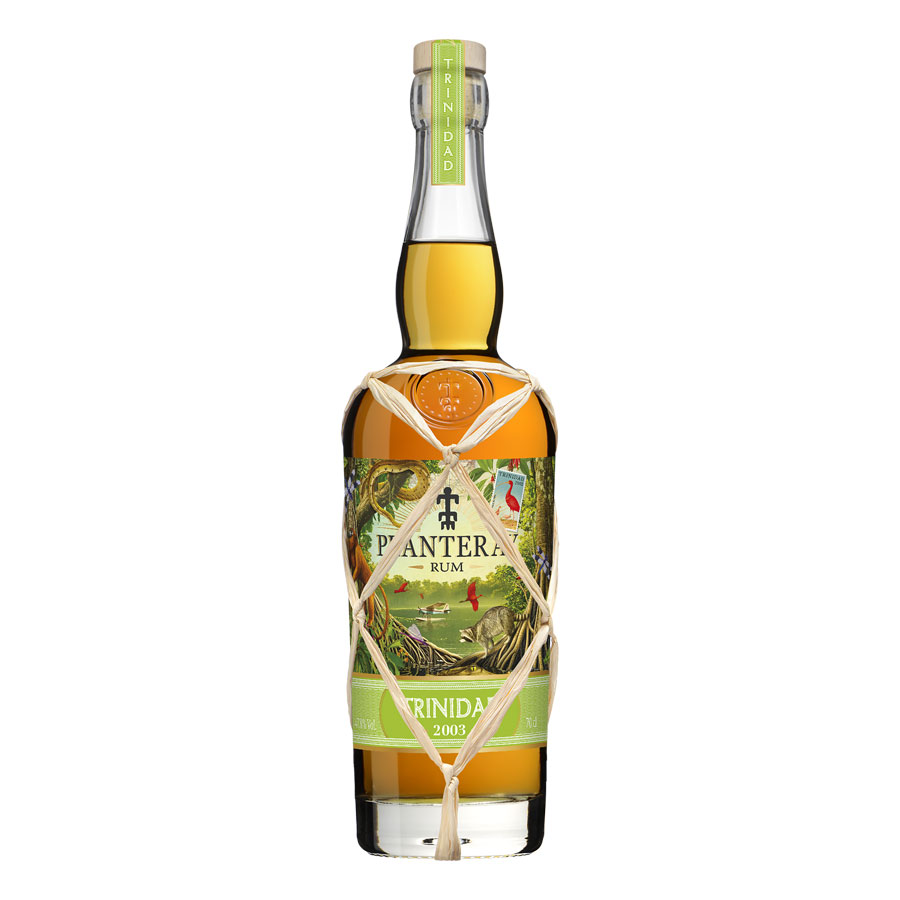
They started their day with a shot of vodka!?
Yes, and you see, when I started to speak a little English, I tried to get them to try cognac. Come on! The guys said to me, ‘Kid, you’re nice, but I don’t want anyone to see that I’ve been drinking.’
And did this movement have an impact on rum?
Yes, it’s not the only factor, but it’s what caused Jamaica to go from 600 distilleries to 6 today. From 130 to 4 in Barbados. People didn’t want aromatic spirits anymore!
There were two types of reactions. Some tried to make light rum, what we call ‘vodka rums’. But you can’t blame them, they did what they had to do to get by. And then in Cuba and Puerto Rico, there was already this culture of light rums. So much so that, legally, rum can have up to 8 grams of aromatic compounds per hectolitre of pure alcohol in the United States, just like vodka.
And what was the second type of reaction?
It was to make rums that were very, too woody in order to appeal to bourbon lovers. So we had ‘vodka rums’ or ‘bourbon rums’, and all the others suffered and many disappeared.
Stade’s in Barbados and Demerara Distillers in Guyana were making very textured rums 80 years ago. They bought columns to make lighter rum and bulk rum in order to survive. But they also kept their incredible stills, such as Rockley in Barbados, which is the oldest copper rum still in operation in the world to our knowledge!
Has this phenomenon affected other spirits?
We saw a similar phenomenon with whisky. When I was younger, single malts were dying out in favour of blends! The very peaty whiskies from Islay were no longer selling and were only being used in blends. The purists of the time said, ‘But wait, it’s medicinal, it’s undrinkable!’ ”
However, from the mid-1980s onwards, there was a renaissance of single malts and peated whiskies. Pot still whiskies. Peat was a very cultural, very historical expression, born out of the need for heating. Peat was the coal of the poor. And so, all these extremely flavourful historical expressions had disappeared.
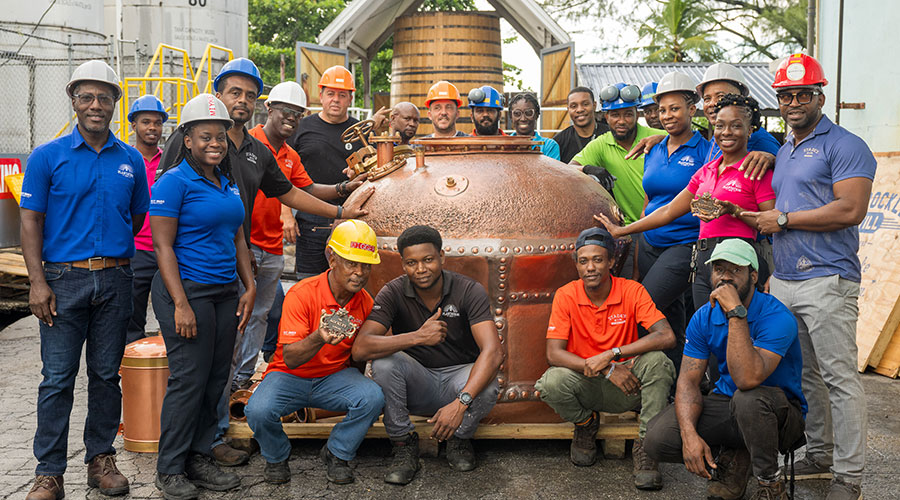
When did textures and aromas in spirits come back into favour?
Since the early 1990s. And I was lucky because I arrived at the right time. My first concept was: a great cognac must be an expression of a terroir, and therefore of taste.
A question about raw materials, because we are seeing that in many countries, there are fewer and fewer rum producers and less and less sugar cane. I’m thinking of Cuba, of course, the French West Indies, Réunion… In your opinion, will we run out of raw materials in the future?
That’s a very good question, and we discussed it at the seminar. Some industries are seeking to decarbonise and are becoming competitors of rum producers for molasses, but also for cane. Today, rum’s competitor is fuel.
Fortunately, molasses travels, and when there is a shortage on an island, you can import it. But this is not always permitted. For example, Réunion has a shortage of molasses, while nearby Mauritius has an abundance of it. But they cannot obtain it there. The GI prohibits it.
How important is the raw material in determining the final taste of rum?
Molasses is extremely flavourful, especially when the sucrose has been extracted and all the impurities remain. But cane is also flavourful because it also contains impurities. In both cases, you have an extremely flavourful material.
It is often said that poor-quality sugar makes the best molasses. In reality, it makes molasses that is easier to ferment because it contains more sucrose. However, you can actually create fabulous flavours in blackstraps, which are molasses from which all the sucrose has been extracted.
On the other hand, they are extremely difficult to ferment because they contain less sucrose. These sugars are much more complex. Fortunately, a few highly skilled people at Stade’s West Indies Rum Distillery in Barbados know how to work with them!
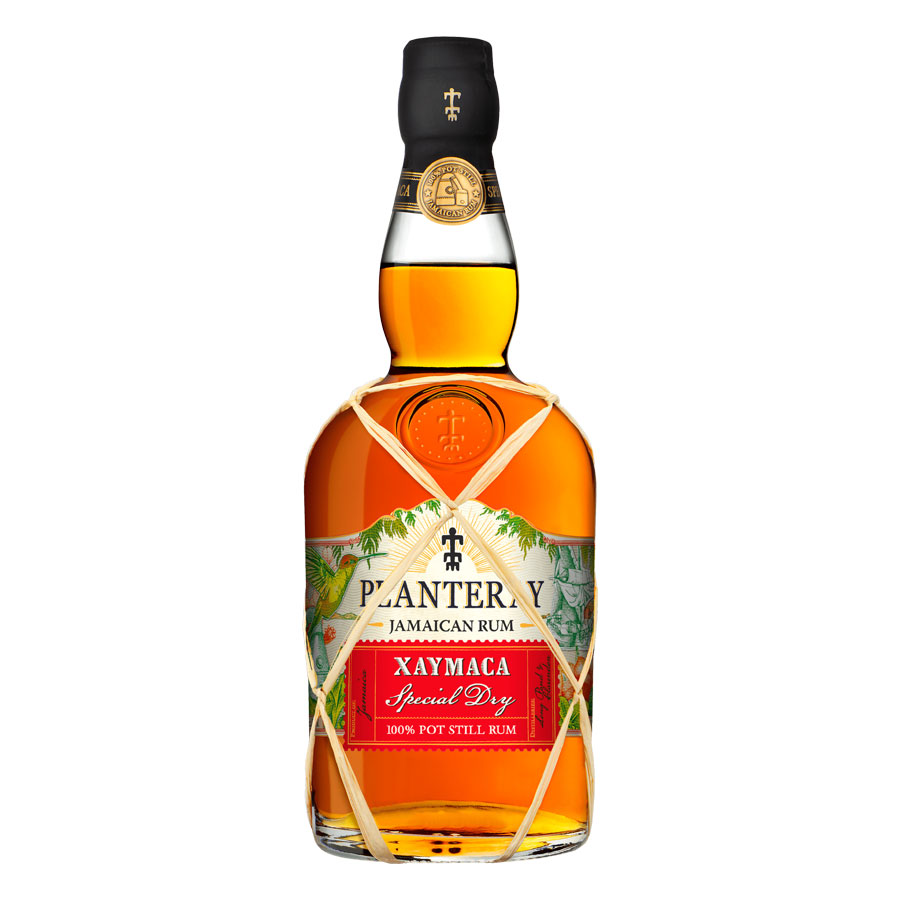
Precisely, what do you think of the French concept of terroir, where the raw materials must come from the place where the rum is produced?
Does terroir simply mean that the raw materials come from here? Or is it expertise in yeast? It’s an eternal debate. It’s true that the French concept of terroir means that the cane comes from the place of production. And in the case of agricultural rum, this is reflected in the taste of the rum.
But that’s not the only way to produce aromas. I think fermentation plays a big part! In the Caribbean, there is extraordinary expertise in working with the raw materials and fermentation. The taste is created, scientifically speaking, during fermentation. Yeast produces alcohol, but above all, it creates aromas and taste.
The raw material is important because it is the food source for these tiny creatures. In Barbados, we have technical archives dating from 1893 to the present day, with monthly documentation. And we can trace the fact that, in the past, they used a little seawater during fermentation.
What was the purpose of this?
It allowed the yeast to be fed differently, in this case by stressing it to create a different flavour. In the same way that cane vinegar is added during fermentation to create esters. This is knowledge unknown to other spirits!
At Planteray, you regularly release vintages based on knowledge from your archives. But they are extensive. How extensive are these archives that you still haven’t exhausted them?
We must have five cubic metres of documents. Our innovations come from the archives, but also from equipment that we repair. Like when we restored the Vulcan chamber still at Stade’s West Indies Rum Distillery. It’s the opposite of vacuum, it’s high pressure, or the 2,000 hours of work on the Rockley by Gaylord, our boilermaker.
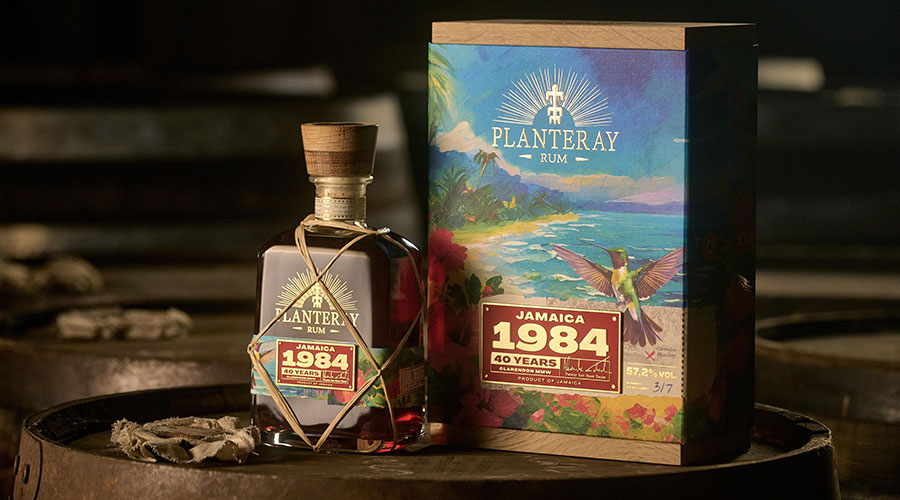
There seems to be a movement in favour of introducing GIs everywhere. What do you think about that?
That’s a big topic! Of course, we are in favour of GIs if they are well written. You should always be wary of those who say that GIs are what we do now, today.
What about our heritage? They end up protecting what they do today and forgetting the possibilities of the past and the possibilities of tomorrow. Take the still, for example. GIs decided that stills were not part of the specifications, even though they were used in the past. That’s a shame!
My teams in Barbados and Jamaica are fighting against standardisation that could be imposed by certain GIs. We are happy to have GIs, but we don’t want them to standardise practices.
For example?
For example, we use vats with a capacity of over 1,000 litres to mature our blends, and some people would like us to abandon this practice, even though it has always been done this way historically.
What is the purpose of working with casks?
It allows us to make absolutely delicious rums, because we blend the different elements of a blend, we melt them together. And we take advantage of this to hydrate them very slowly.
Why do some people not want vats in GIs? Because rum ages less quickly in them?
Indeed, they say that it ages less quickly. And in reality, it is different. The imposition of the new barrel rule in bourbon at the end of Prohibition in the United States changed the taste of rum and Scotch whisky forever.
Previously, and here I am quoting Matt Pietrek, who has done monumental research on the history of rum ageing, 100% of rums were aged in vats. Today, almost all of them are aged in ex-bourbon casks, and we are led to believe that this is typical and that it should be included in the Tables of Law.
There are more and more rums that are extremely woody, like bourbons. And I don’t like that. I always explain to people that God didn’t make us to drink wood. And besides, it gives you crazy migraines. Wood should not be an element of taste, but used as a condiment! In fact, people are getting tired of this excessive wood.
Wine has followed the same trajectory, with a preference for full-bodied, oaky wines, but today that has gone out of fashion.
Yes, and I think we’ll see a similar shift in spirits. But it depends on the approach and the culture. Richard Paterson, a talented chap who works for Dalmore whiskies, will tell you that 50% of a whisky’s flavour comes from the wood. He buys and sells a million casks a year, so he knows what he’s talking about.
Some rum producers, such as Brugal, even say that 80 or 90% of the aromas come from the cask.
They make extremely light column rums, which is a different approach. I’m not saying that casks aren’t necessary, or that rum shouldn’t have wood aromas. But we can work differently!
How, apart from using vats?
For example, by practising inter-staving, or Interstaving. That is, by adding staves to the rum during ageing in vats. Maker’s Mark has just launched an edition like this, as has South African rum Mhoba.
Staves are used to a limited extent, like peat. This allows production costs to be controlled and wood to be added very lightly. These are traditional methods that can be played around with. It’s prohibited in Europe, which is a shame.
It’s true that it’s less appealing than ageing in barrels…
When there are fewer forests, we’ll get there. We’ll use techniques that don’t require cutting down so many trees. This year, in the United States, they cut down 1.2 million trees! So, over ten years, that’s 12 million.
Another technique that is sometimes criticised is double ageing. What is the point of ageing rum in cognac barrels? Apart from reducing the angel’s share?
Double ageing is an ancient technique. Originally, rums from Barbados and Jamaica were aged in vats in their country of origin, then transported in casks and stored in casks or re-vatted in Europe.
It’s in my book on Navy Rum, which will be published in French in September! This allowed the harshest, most aggressive alcohol to evaporate during the tropical phase. Continental ageing allowed it to mellow, to undergo a kind of gentle landing, an integration that is very interesting. Both are interesting!
Today, at Planteray, the rum benefits from dynamic ageing at sea, then in Cognac in the incredible casks we have on site.
You mentioned Navy Rum. It hasn’t been produced since the 1970s, so we hardly drink it anymore, yet it has become something of an icon without us really knowing what it is. Why is that?
It’s actually the Madeleine de Proust of an entire civilisation. For hundreds of years, all Navy sailors, who enabled the rise of the British Empire, were entitled to their ration of rum. So everyone had drunk it, or knew someone who had drunk it. And then, overnight, the Navy stopped serving a daily ration of rum to its sailors. It must be said that ships had become much more destructive, and that the consequences of a mistake could be disastrous (think of nuclear submarines!).
The day it all ended was called Black Tot Day, meaning a day of mourning. The sailors all wore black armbands as they went to get their last tot, and they called it the black day of the navy and the tot. But even today, when the king visits a ship, there is still a ration, called the rum ration.
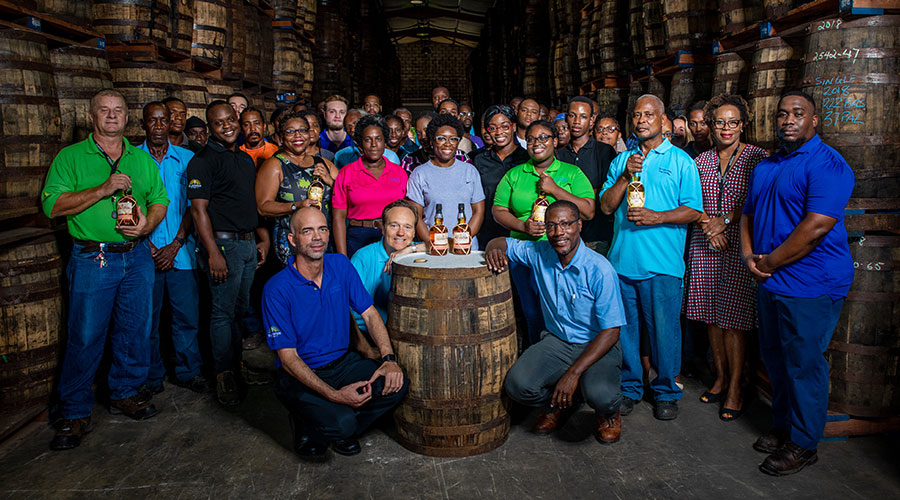
But do we know how it was made?
After Black Tot Day, navy rum ceased to be produced, then it became legendary and many sought to reproduce it. Matt Pietrek did some research and spent hundreds of hours consulting archives in London. He also met a certain Mr Fogg who had been in the Navy and then worked for a broker who supplied the Royal Crown with Navy Rum.
This man, who was very ill, gave us all his documentation and everything he had collected during his lifetime before he passed away. In fact, navy rum was a blend of different vintages and origins, and the recipe changed every three months! It had a high alcohol content of 57.4% proof. It couldn’t be any higher because rum becomes flammable above that level. And we didn’t want a flammable product on board a ship!
In reality, it was probably closer to 54.5%, or 2.5% below proof, because the measurement techniques of the time were biased. We also know that it benefited from dynamic ageing in ships and was not aged in ex-bourbon casks. It was actually aged in open vats on the banks of the Thames in London for six months to two years (with an angel’s share of 15%). And finally, the last element is that they used a tiny bit of “browning”.
What is browning?
It was a very, very, very, very wild, raw sugar, which was actually slightly heated for the toaster. Not like the industrial caramel used in whisky and spirits today, which has no residual sugar at all. We have the exact percentages and it was part of the recipe. In short, we recreated our navy rum and, as a tribute, we called it Mr Fogg!
And what is in Planteray’s navy rum?
In the first edition, which was released in the USA, there was Guyana, Jamaica, Barbados and Trinidad. In the new edition (they drank it all in the USA), we have added a touch of Mauritius.
